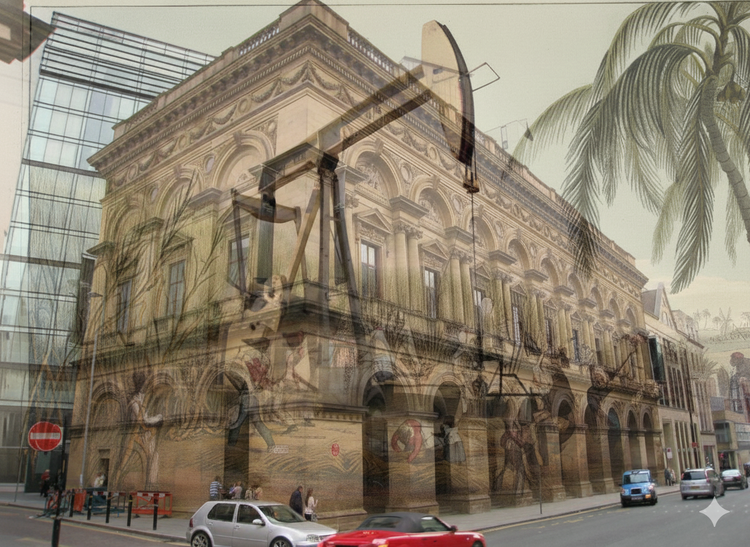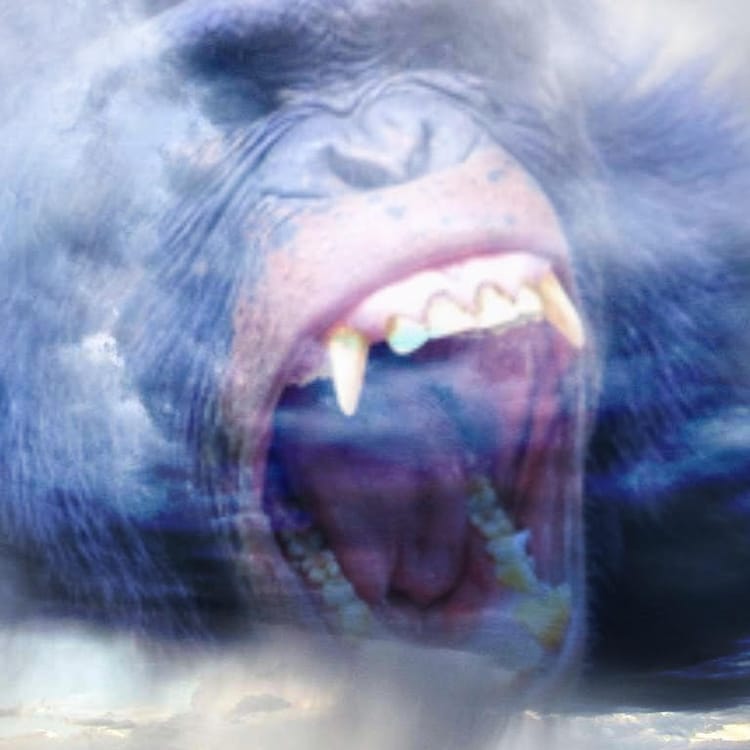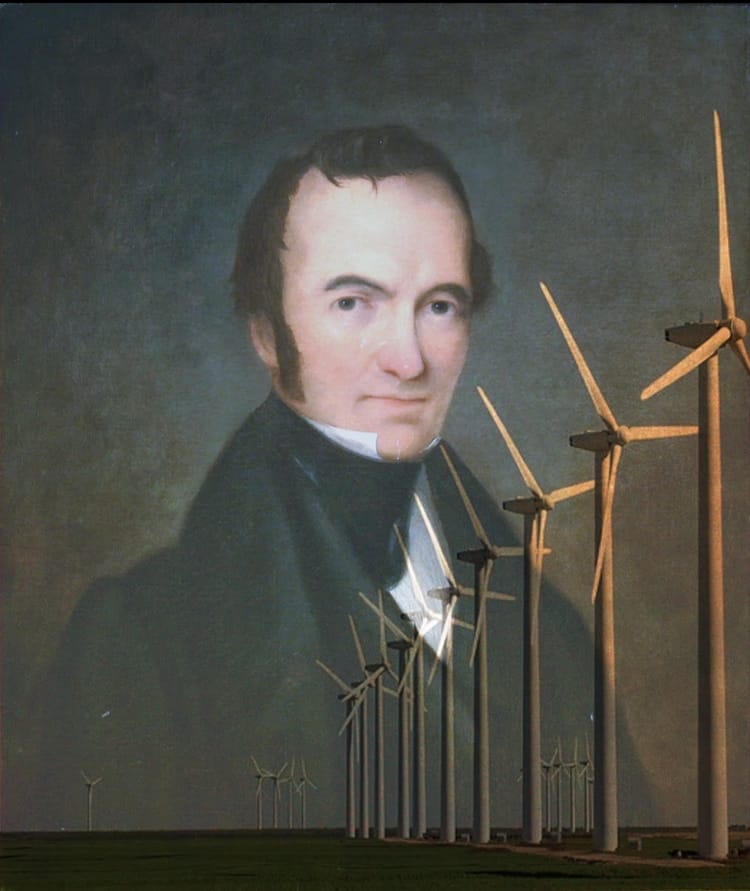The Endangered 'Real American'

Saul here. Since I was in high school there has been a voice living, rent free, in my head: a harsh, rasping and wholly imaginary voice of the supposed American mainstream.
In my subconscious it has the tenor of a Rush Limbaugh spot or Karl Rove-run ad campaign from the mid-2000s, and it pipes up in odd moments to tell me what actual Americans want.
Here’s what that looks like, in my practice today: When I cover climate stories, for example, the voice tells me that Americans care about jobs over the environment — and see those two things as in opposition. When I write about the buildup of plastics in our lands, waters and bodies, it tells me, haughtily, that Americans will never give up convenience. When I cover the case for charging fossil fuel companies with homicide, it says that Americans chose our lifestyles and their consequences: that we love gasoline and will never leave it. And when I read about, say, Gov. Ron DeSantis’ (R) plan to outfit eight Florida state parks with pickleball courts and golf clubs, that voice tells me that — weep for the spoonbills and scrub jays though we may — this is inevitable progress, and, ultimately, what the country wants.
Except that it isn’t. As the Associated Press notes, the Florida proposal has received widespread opposition from across the political spectrum — more proof that land politics remain surprisingly trans-partisan. While the U.S. does rank dead last in the G-20 developed nations for support for climate action, more than 55 percent of the country still back climate policies. Per Pew, more than two-thirds want added government support for renewables and think business isn’t doing enough to fight the climate crisis.
Beyond climate, many of the breakthrough stories of my time at The Hill were around trans-partisan environmental issues: the explosion of an East Palestine train carrying plastics precursors; the current ubiquity of potentially toxic plastics in everything we consume. Stories I published on why culling invasive mammals may be unnecessary and the rise of a new class of American land baron over the farm sector went viral after being featured on the arch-conservative Drudge report.
Welcome to Heat Death, the newsletter that's come in search of America – or at least, its most figurative entities. Both Brothers Elbein have long been fascinated by this imagined voice – one that appears to live in the heads of many other pundits and journalists as well. Asher has long argued, half-facetiously, that it belongs to a kind of cryptid: an imagined American mythic form known as the Real American. Caricatured (reverently) in Obama-era Hollywood sitcoms in the form of Reaganophile daddy-types Jack Donaghy (30 Rock) and Ron Swanson (Parks & Rec), he argues below, the Real American has been mobilized in media to block political action that majorities of the populace actually support.
This character, I’d argue, originated in the drive-time A.M.-infused culture wars of the 1990s — and it may be nearing its end.
One early sign of this is the staggering outpouring of support in Democratic circles for Gov. Tim Walz, Kamala Harris’ V.P. pick, a former teacher and coach and avowed social Democrat whose claims to fame are things like passing universal free school meals — a policy which many Republicans consider, and I am not exaggerating this, an expensive affront.
As a pick, Walz was not popular among the pundit class. Never-Trumper Matt Lewis called him Kamala’s first mistake, and said that his handling of the 2020 racial justice protests would be “easily pilloried.” (By whom?). Former George W. Bush speechwriter Marc Thiessen called picking him her “unforced error” because it was doubling down on a liberal ticket that Americans (elsewhere) didn’t want.
Current Republicans jumped on Walz as hurting Democrats with real Americans “It doesn’t drastically change my life,” one campaigner told New York. In comparison to Pennsylvania Gov. Josh Shapiro (D), “it just makes it a bit easier to bash Harris and her ticket as radically progressive.”
The question this election will be whether that attack works. In his speech this week at the Democratic National Convention, Walz laid out some of his policy bonafides.
“While other states were banning books from their schools, we were banishing hunger from ours,” he said. "We also protected reproductive freedom because, in Minnesota, we respect our neighbors and the personal choices they make. And even if we wouldn't make those same choices for ourselves, we've got a golden rule: Mind your own damn business.”
What this is, I’d argue, is nothing less than a power grab — a reach straight for the jugular of the normative Real American; his replacement with a kind of unabashed earnestness that is (in this case) Midwestern-coded but that has analogs all over this country.
The image Walz conveys is “‘you can be a regular, basic white guy and still treat people decently and have a place in the country,” New York Times columnist Jamelle Bouie, a rare pundit to support Walz, wrote on BlueSky. He added that “the insistence by centrist pundits that Walz somehow alienates moderates is bizarre and really demonstrates the extent to which they are out of touch with how normal people perceive politics.”
November is still far off. But here’s a prediction: if the Democrats win in any significant margins, the classic figure of the Real American may, like the once-prominent American forest ape, be on track to vanish back into the forest.
In search of Real Americans
Asher here. Our great country has a love of cryptids. There’s the shaggy, loping Bigfoot, who haunts woodlands from Oregon to Florida. The mysterious Mothman has a thick chrome statue erected in its honor in the West Virginia town of Point Pleasant. Chupacabras slink like mangy coyotes along back-roads in Texas; Champ the plesiosaur slithers through the cold waters of Lake Champlain.
They’re grand things, these unknowable creatures: magical in their intangibility, enriching the nation’s fabric through the mere possibility of their existence.
Every two to four years, however, the nation’s massed punditry in New York and Washington go on the hunt for the most pivotal, slippery and iconic of the nation’s cryptofauna: The Real American.
The Real American is a tricky beast, with a fluctuating range and specific habitat requirements. Sometimes they’re found amid the corn fields and flat, monotonous agricultural lands of the Midwest and Great Plains. Other times, amid the varied and lovely landscapes of the rural South, or the rugged emptiness of the mountains, badlands or deserts. (They generally shun coastlines, unless that coast is Florida — but only northern Florida.) Like many grand and charismatic megafauna, they are not to be found living in densely urbanized cities. They flock instead to smaller towns or, paradoxically, vast, sprawling exurbs. They are uniformly White and — it goes without saying — conservative. They are obligate carnivores: while they certainly hunt, their preferred feeding ground is the local diner, where they feed only on those meats they can pronounce. Poor but proud, working sons and daughters of America’s heartlands, they farm such necessities as rangeland beef, drywall and dealership-grown Ford F-series pickups.
As constructed by the media folks who go out in search of them, Real American is perpetually endangered, and under pressure from various invasive species such as Californians, New Yorkers, Black and Gay people on the television, and Central Americans. The conservation of this noble breed — complete with protected lands covering the entire non-urban swath of the country — is a top priority. (Miraculously, though, despite the many threats, its population never seems to wane.) Unlike its more circumspect cousins like Bigfoot and el Chupacabra, the Real American is remarkably eager to have its picture taken, and fond of giving interviews — though in practice, its chain media are always more than willing to speak on their behalf. So well understood is the Real American that pundits on a deadline are free to cut out the middleman and simply commune with these noble alabaster beings directly.
A cynic might point out that the Real American — also known as the Regular American or the volk, to give the creature its name in original German — seems to be a synonym for “Republican Voter.” This, of course, is hurtful nonsense. The Real American voted for Democrats before they turned from the glorious light of Jackson and Jefferson by moving slightly to the left of any given pundit. Like the noble unicorn that seeks out only the purest virgin, the Real American can be attracted by anyone willing to foreswear annoying college kids, trans people, and black voters concerned with being shot by cops. How beautiful they are, the Real American! How White! We are blessed to share the continent with them.
What’s notable about this construction of Real Americans is that — despite being a real person who really lives in the real nation of America — you, reader, definitionally aren’t one. Not if you’re of African, Asian, Latine or any mixed descent thereof, whether you’re a child of recent immigration, have a lineage in this country dating back over 150 years, or are in fact indigenous. Not if you’re not Christian, or at least (since the Bush years) “Judeo-Christian.” Not if you’re so debased as to live in a city, as the majority of people in the nation (and all media pundits who think this way) do, and not if you live in the country but hold opinions anywhere to the left of the current Republican consensus. Nobody in the non-conservative media is one either, a fact many of them — especially the White ones of lofty education — carry like a shameful, burning ember in their breasts. This is why they, in particular, believe in this particular beast with such fervor, and go so often out of their way to insert their concerns into any conversation. They know that the Real American longs for genuine political representation, and they will neither be absolved of their shame or free of its horrid whispers until they make sure it gets it.
This is the spell, at any rate, that this particular cryptid casts. It’s historically been a powerful one, and one that — yet again, this year — pundits and assigning editors and deeply lazy journalists have sought to bolster. Any opinion evinced by actual people living in this country can and has been shouted down, pushed aside, or swallowed up by the galumphing, cavernous voices of Real Americans, as transcribed by their faithful avatars in press and politics.
Yet it’s worth bearing in mind one simple fact: these creatures do not exist. There are no Real Americans. There are, you might say, only real Americans. For that category, anyone who lives in this country qualifies —a dazzling and equally authentic array of creeds, colors, gender expressions, backgrounds, and beliefs, from the most radical leftist to the most frothing reactionary. I, a Southern, occasionally polyamorous, leftist Jew, am a real American. So is everyone I’ve ever met while reporting. There are real Americans who closely resemble their cryptid counterpart politically and demographically — but also oppose having their lands crossed by oil pipelines or fracking sites. There are real Americans (a majority of the Texas electorate, in fact) who seem superficially similar to the Real stereotype but are, in fact, quite different: agnostic about abortion or in favor of it; concerned about climate change; uninterested in culture wars around queer people or actively supportive of them. Every single person in vast and teeming New York City is a real American. So are the people of Dothan, Alabama; Montana’s Bitterroot Valley; the suburbs outside Kansas City; Houston of the many freeway flyovers; patrician Connecticut; blazing Phoenix and borderland Brownsville. Even the most obnoxious products of Silicon Valley — your Peter Thiels, Elon Musks, JD Vances — are, you guessed it, real Americans.
It is, frankly, bizarre to fixate so heavily on a mythical entity when its material counterpart is so easily available. This, I think, is one reason why online Republican politics and punditry alike have grown so, well, weird: they are increasingly detached from the realities — even in rock-red conservative areas — of the country in which they live, chasing a high they can never really slake. Real Americans, after all, can be anything you want. That they so often take the shape of reactionary conservative Völkisch betrays a lack of imagination and deep neurosis among our loudest shouters. They exist to offer any given conservative (or nominally non-partisan pundit) assurance that their particular obsessions have a legitimate constituency. Inasmuch as they live, they do so to shut everyone up.
Believe in them too fervently, however, and you begin to look like a fool. As much of a choreographed spectacle as the current Democratic National Convention is, it’s a useful reminder of this country’s genuine diversity, and how open large swaths of the population are to it. It has likewise underscored how far off the devotees of the Real American have drifted. Like so many cryptid enthusiasts, they have wanted the thing they pursue to be the genuine article, to offer them solidity and certainty: that the the countryside still has space for Bigfoot, for Mothman, for lake monsters and goat-suckers. Perhaps it does. They would do well to remember it has space for the rest of us as well.
Other findings
Asher has been writing a lot for The New York Times about giant prehistoric predatory salamanders, how frogs use glue as a defense, and an ancient not-quite-relative of the walrus that’s roiling paleontological circles. He also looked for the National Wildlife Federation’s magazine at a question that’s near and dear to us at Heat Death — do animals use tools?
Saul has been churning out articles at The Hill, ranging from new scientific findings, like those around how to kill a mammoth, how hikers are giving COVID-19 to wild animals, the iron-tipped teeth of komodo dragons and the disturbing rise in self-managed abortions since the Dobbs decision.
One particularly alarming element of his recent reporting: the emerging evidence that key pillars of the Earth’s climate are on track for collapse, particularly in light of the past year of weird and record-breaking weather.
And as he gets dragged ever more in the direction of tech policy reporting, he’s written about the ‘constitutional crisis’ keeping U.S. commercial spacecraft stuck in orbit and how a geothermal company and coal co-op are teaming up to create a pilot project for a clean-energy technology that could serve as a drop-in replacement for much of the U.S. coal fleet.
This is Heat Death, an occasional newsletter from the Brothers Elbein. Thanks for being with us.





Member discussion